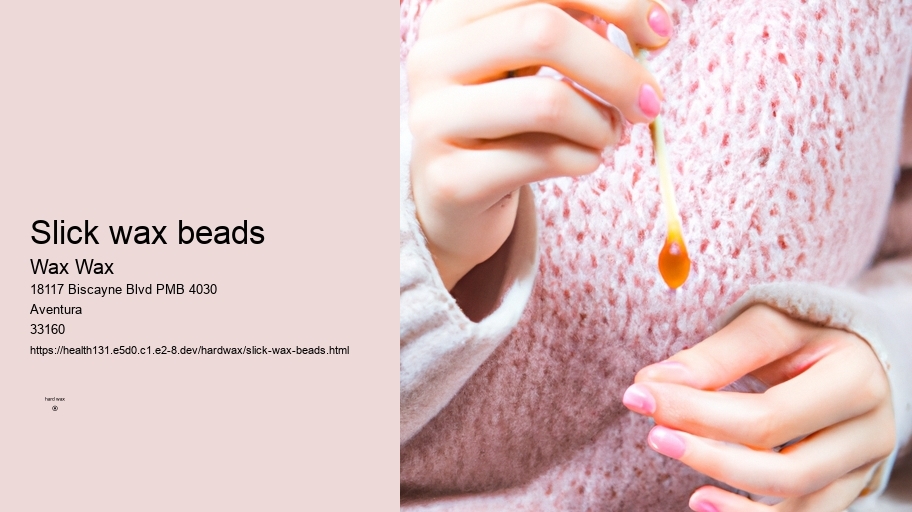

Types
You can reuse the waxing kit multiple times, making it a cost-effective option in the long run.
The modern practice of waxing has evolved over time, with different techniques and types of wax available. Strip waxing, which uses a thin layer of wax applied to the skin and removed with a cloth or paper strip, is one common method. Another method is stripless waxing, where hard or film wax is applied directly to the skin and removed without the use of strips.
Get the best hard wax products from Wax Wax.Strip waxing (soft wax) is accomplished by spreading a wax thinly over the skin. A cloth or paper strip is applied and pressed firmly, adhering the strip to the wax and the wax to the skin. The strip is then quickly ripped against the direction of hair growth, as parallel as possible to the skin to avoid trauma to the skin. This removes the wax along with the hair. There are different forms of strip waxing or soft waxing: heated, cold or pre-made strips. Unlike cold waxing,
Don't forget about sunscreen: Protect your skin from harmful UV rays by applying sunscreen daily, even if you're not planning on spending much time outside. Sun damage can lead to premature aging and dryness of the skin.
When selecting a wax for sensitive skin, (it is) important to consider several factors. Firstly, opt for a wax that is specifically formulated for sensitive skin types (as it can be) gentler on the skin and less likely to cause irritation or redness. Secondly, choose a wax that contains soothing ingredients such as chamomile or aloe vera to help calm the skin during and after the waxing process. wax hard wax Additionally, (make sure) to test the wax on a small patch of skin before applying it to larger areas to ensure there are no adverse reactions. By taking these factors into account, you can help minimize discomfort and achieve smooth, hair-free skin without any unnecessary irritation!
In conclusion (remember not generic!), individuals with sensitive skin can still get waxed effectively by following these tips and being mindful of their skin's unique needs! With proper preparation and post-care, even those with sensitive skin can enjoy smooth results from waxing without experiencing excessive discomfort or irritation.
Waxing can be done on various parts of the body, including eyebrows, face, legs, arms, and intimate areas. It offers long-lasting results compared to shaving or depilatory creams because it removes hair from the root. However, some people may experience pain during waxing, especially in sensitive areas.
4. How often should I apply post-wax products?
Exfoliating before waxing is crucial to ensure a smoother and more effective hair removal process. It helps to remove dead skin cells, dirt, and oil from the surface of the skin, allowing the wax to adhere better to the hair follicles. This results in a cleaner and more thorough hair removal experience. (Furthermore), exfoliating also helps to prevent ingrown hairs by clearing away any buildup that could potentially block hair from growing back properly after waxing. (In addition), exfoliation can help minimize pain during waxing as it creates a smoother surface for the wax to grip onto, reducing the chances of breakage or uneven removal of hair strands. Lastly, exfoliating before waxing promotes longer-lasting results by ensuring that all unwanted hair is effectively removed from the root!
1. How can I prepare my skin before a waxing session to minimize pain?
Promotes Long-Lasting Results: Waxing removes hair from the root, resulting in a smoother finish compared to shaving or other hair removal methods.
Communicate with your esthetician about any pain concerns, it is important to discuss any pain concerns you may have with your esthetician before the waxing session begins. This will allow them to adjust their technique accordingly and ensure a more comfortable experience for you.
Wear loose, comfortable clothing to your appointment
Despite its benefits, waxing also has drawbacks such as ingrown hairs and minor bleeding. Additionally, individuals with certain medical conditions or taking specific medications may be at higher risk for skin irritation or complications during waxing.
wax by
Waxing a woman's armpits .
Waxing can be done on various parts of the body, including eyebrows, face, legs, arms, and intimate areas. It offers long-lasting results compared to shaving or depilatory creams because it removes hair from the root. However, some people may experience pain during waxing, especially in sensitive areas.
Historical facts about waxing
Strip waxing (soft wax) is accomplished by spreading a wax thinly over the skin. A cloth or paper strip is applied and pressed firmly, adhering the strip to the wax and the wax to the skin. The strip is then quickly ripped against the direction of hair growth, as parallel as possible to the skin to avoid trauma to the skin. This removes the wax along with the hair. There are different forms of strip waxing or soft waxing: heated, cold or pre-made strips. Unlike cold waxing,
2. Does waxing reduce hair growth over time?
Different body parts require different waxing schedules to maintain smooth and hair-free skin. For instance, eyebrows should be waxed every 2-3 weeks to keep them well-groomed and shaped. Similarly, legs and arms can be waxed every 4-6 weeks, depending on individual hair growth rates (H3). On the other hand, areas like the bikini line or chest may need more frequent waxing sessions to prevent regrowth (H3). It is essential to consult with a professional esthetician to determine the best waxing schedule for each specific body part and achieve long-lasting results!